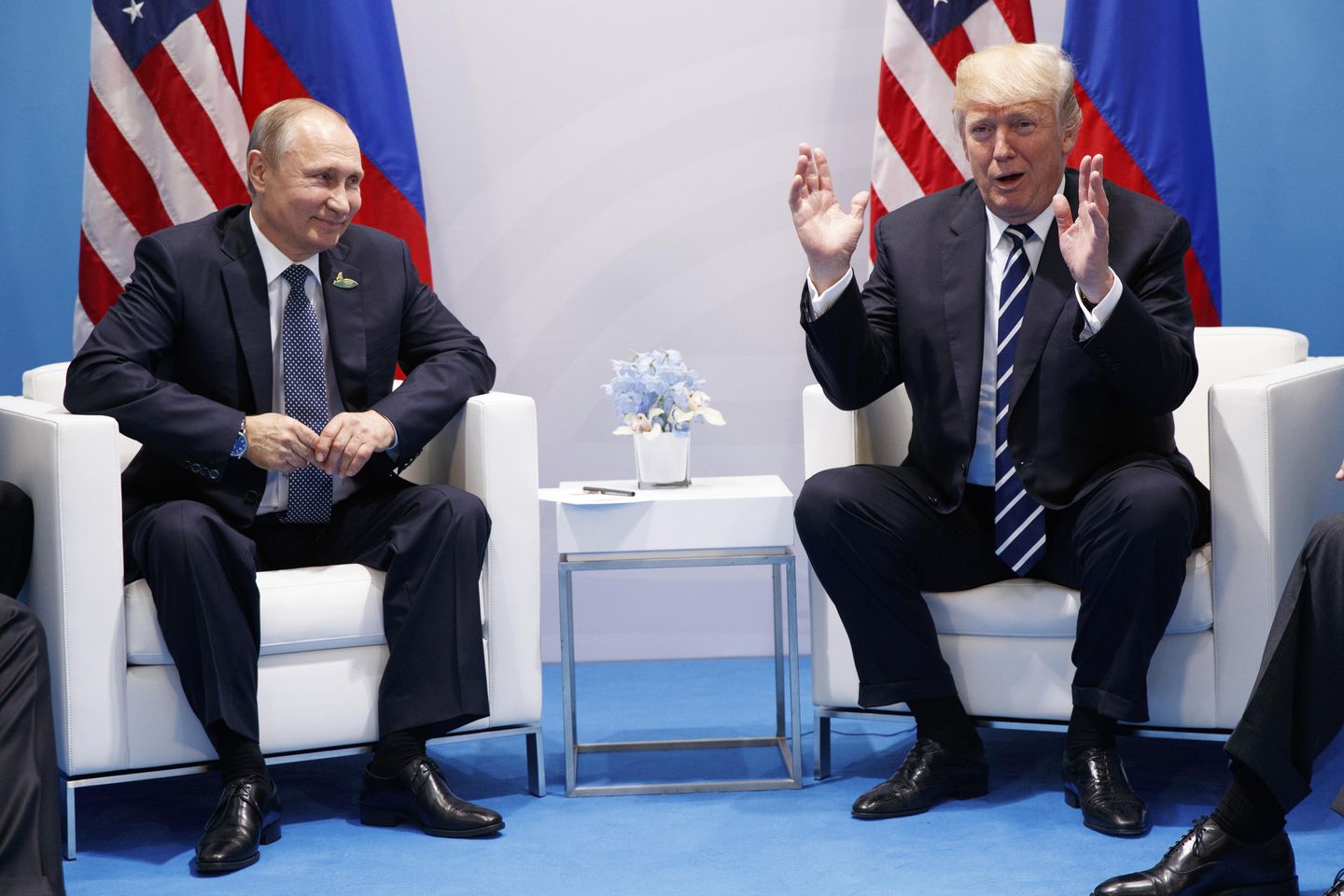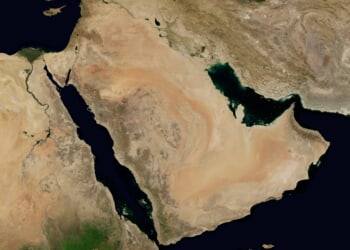
President Trump’s summit Friday with Russian President Vladimir Putin is fraught with geopolitical risks for Europe and the U.S., experts say, but it also offers the potential reward of moving one step closer to ending more than three years of brutal war in Ukraine.
Ahead of the sit-down in Alaska, the gulf between the negotiating positions of Russia and Ukraine remains as wide as ever, with some analysts predicting the war will grind on into next year.
For the meeting to be a success, Mr. Trump must convince Mr. Putin to back off his more stringent demands and move on to more meaningful talks between Kyiv, Moscow and Washington.
Most analysts agree that it is worth a try.
“The only way you are going to end this war is through negotiations,” said Anatol Lieven, director of the Eurasia Program at the Quincy Institute for Responsible Statecraft.
Still, there’s plenty of downside to negotiating with Mr. Putin, who started the conflict by annexing Ukraine’s Crimean Peninsula in 2014 and launched a full-out invasion of Ukraine in 2022.
SEE ALSO: Putin to test Trump’s dealmaking prowess at Alaska summit
Kyiv is nervous that Mr. Putin will use the meeting to convince Mr. Trump to support a deal that’s too advantageous to Russia, effectively extending the war or forcing Ukraine to give up too much land.
Ukrainian President Volodymyr Zelenskyy has warned that the Russian president wants to “deceive America.” He said Mr. Putin will portray the meeting as “his personal victory and then continuing to act exactly as before.”
Another risk is that the U.S. waves off some sanctions on Russia and normalizes trade relations to extract a peace deal. European leaders worry that it would essentially reward Mr. Putin for 11 years of aggression, including three years of full-scale warfare. Mr. Putin then would keep fighting because he sees it as in Russia’s interest to keep grinding down Ukraine.
Russia has a significant military edge with a three-to-one manpower advantage over Ukraine and more than twice as much ammunition as all of NATO. Ukraine’s battlefield position is also shrinking. Kyiv is struggling to recruit soldiers, and its desertion rates remain high.
Mr. Trump views Friday’s summit as a “listening session” to set the stage for trilateral talks to end the war.
“There’s a very good chance that we’re going to have a second meeting, which will be more productive than the first, because the first is [where] I’m going to find out where we are and what we’re doing,” Mr. Trump said this week.
He’s kept it vague about what a peace deal should entail, but he has floated the possibility of a land exchange and said he would “try to get some of that territory back for Ukraine.”
Mr. Trump has said that if Mr. Putin isn’t negotiating in good faith, he’ll know “within two minutes.” He threatened “severe consequences” for Russia if Mr. Putin isn’t serious about a peace deal.
While not specifying what those penalties would be, Mr. Trump previously threatened to increase tariffs on Moscow and punish countries that are buying Russian oil. Earlier this month, he increased tariffs to 50% on India, one of the few nations that continues to buy Russian oil.
If Mr. Trump walks away from a bad deal, that would still be a victory for Ukraine and Europe, said Peter Doran, a senior fellow at the Foundation for the Defense of Democracies.
“The best outcome here is if President Trump recognizes there is a bad deal,” he said. “There is definitely a risk that Trump would make a bad deal at any cost.”
Moscow’s most recent demands to end the war were unacceptable to Ukraine. Russia currently controls 19% of Ukraine, including all of Crimea, all of Luhansk, more than 70% of the Donetsk, Zaporizhzhia and Kherson regions, and portions of the Kharkiv, Sumy, Mykolaiv and Dnipropetrovsk regions.
Moscow previously proposed:
• A full withdrawal of Ukrainian troops from the parts of Donetsk, Zaporizhzhia and Kherson.
• Kyiv perminently abandoned its bid to join the NATO military alliance.
• Ukraine acknowledges that Crimea, Luhansk, Donetsk, Zaporizhzhia and Kherson are now part of Russia.
• A guarantee that the rights and freedoms of Russian-speakers in Ukraine would have to be codified in an international agreement.
Mr. Zelenskyy has repeatedly rejected Moscow’s demands as an absurd ultimatum. Giving up on territories that tens of thousands of Ukrainian soldiers died defending would be a bitter pill to swallow.
He has called giving up any land a non-starter.
It’s unclear if Russia would give any land back or what that would look like. Mr. Trump this week talked vaguely about Russia exchanging “ocean front property,” a possible reference to the shoreline along the Sea of Azov or Black Sea. But that is part of Mr. Putin’s land bridge connecting Russia to occupied Crimea.
Mr. Trump, who in 2024 promised to end the Russia–Ukraine war on his first day back in the Oval Office, is still convinced he can strike a peace deal. He has done it in other conflicts, and if he succeeds this time, it will bolster his case for a Nobel Peace Prize.
Mr. Trump has taken credit for a ceasefire between India and Pakistan, although India insists that it played a major role in brokering peace. He also helped end the conflict between Armenia and Azerbaijan, which was sealed with a peace deal ceremony at the White House.
The president also had a hand in ending several smaller regional conflicts, but ending the big wars, including in Gaza and Ukraine, has remained elusive. By resolving the war in Ukraine, Mr. Trump can save face on his campaign promise to end the conflict within 24 hours after taking office.
However, the implications of a peace deal extend beyond Mr. Trump’s political fortunes. It would lower energy prices, which would boost the global economy, ease tensions between Russia and Europe, and likely usher in an era of prosperity.
A research briefing by Oxford Economics revealed that even a fragile ceasefire would increase the European Union’s Gross Domestic Product by 0.5 percentage points by 2030 and a ramp of defense spending by all EU NATO members to 3% by 2028.
If a more stable ceasefire can be reached, gas prices would drop to pre-war values, which would lead to a 1.4% decline in inflation in 2026. The economy would also benefit from a sizable increase in military spending as well as spending on reconstruction efforts in Ukraine.
“I am very encouraged to see that the White House has rapidly engaged Europe and Ukraine this week. This communicates to the world that the United States is not going to negotiate about them without them,” said Mr. Doran of the Foundation for the Defense of Democracies. “I am even more encouraged by Trump’s own statements that he’s going to have the Europeans and Ukrainians on the phone immediately after the meeting with Putin.”





![ICE Arrests Illegal Alien Influencer During Her Livestream in Los Angeles: ‘You Bet We Did’ [WATCH]](https://www.right2024.com/wp-content/uploads/2025/08/ICE-Arrests-Illegal-Alien-Influencer-During-Her-Livestream-in-Los-350x250.jpg)
![Gavin Newsom Threatens to 'Punch These Sons of B*thces in the Mouth' [WATCH]](https://www.right2024.com/wp-content/uploads/2025/08/Gavin-Newsom-Threatens-to-Punch-These-Sons-of-Bthces-in-350x250.jpg)








